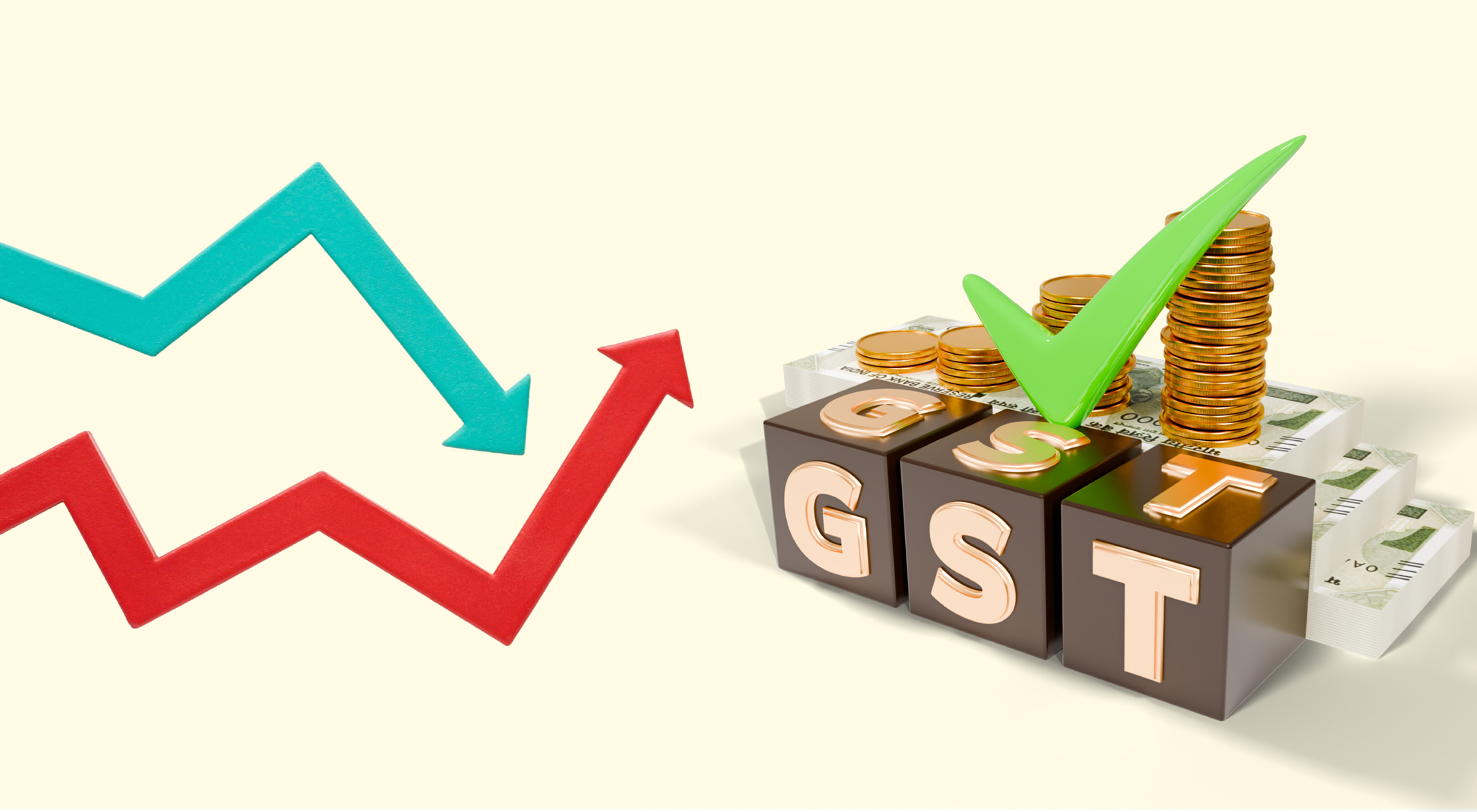India’s tax system is taking a big step forward. With the GST rate changes effective from 22nd September 2025, businesses across the country are now operating under a leaner, simpler, and more predictable tax structure.
That’s great news—compliance just got easier. But here’s the real question: how quickly can you update these new rates in your system? For many, that means a long and tiring process of updating tax rates across hundreds—or even thousands—of stock items. It’s slow, error-prone, and resource-heavy.
But for businesses using TallyPrime, this transition won’t feel like a burden. It’ll feel like just another easy update. Because TallyPrime is built exactly for moments like this—when reforms bring big changes, and you need a system that helps you move forward quickly, confidently, and with zero fuss.
The challenge: A mountain of manual work
Imagine this. Your business has 1,000 stock items. Out of them, 400 are moving from 12% GST to 5%.
If your accounting software doesn’t support bulk updates, here’s what your team needs to do:
- Identify all 400 affected items.
- Open each item’s master one by one.
- Change the tax rate.
- Save. Repeat. 399 times.
It’s not just tedious—it’s risky. A single oversight could lead to wrong invoices, mismatched returns, or compliance issues later.
And that’s why many businesses are nervous about this transition. Not because of the GST reforms (which are welcome!), but because of the limitations of their software.
The TallyPrime difference: Designed for change
We understand that tax updates aren’t a once-in-a-decade event—they’re a regular part of compliance. And when reforms bring major shifts, you need a system that adapts as fast as you do, and TallyPrime is engineered considering the changing dynamics of external changes.
How to change GST rates in TallyPrime?
Update GST rates in TallyPrime with this help video.
You can also visit our Tally help page for detailed step guide.
Here’s how TallyPrime makes GST updates easy:
Group-level updates – One change, many results
If you organize stock into groups—say “Packaged Foods” or “Consumer Electronics”—you don’t need to touch every single item. Update the GST rate for the group, and every item inside it automatically inherits the new rate.
So, if “Packaged Foods” moves from 12% to 5%, you don’t have to update biscuits, sauces, and snacks individually. Just change it once at the group level, and you’re done.
Stock-level update – One-to-one change
Many businesses maintain GST at the stock-item level.
Here’s how you can handle this with TallyPrime:
- Group your items smartly (e.g., “Packaged Foods” or “Auto Parts”) and apply GST to the group. All items inside instantly inherit the new rate—saving you from endless manual updates.
- If grouping isn’t possible, you still have the flexibility to update GST directly at the item level for complete accuracy.
This way, whether you manage hundreds of SKUs or just a handful, GST updates stay quick, structured, and hassle-free.
Ledger-level control – Smarter transactions
Some businesses prefer to manage GST at the ledger level—say, “Sales – 5% GST” or “Sales – 18% GST.”
For service-based businesses, or those not dealing with inventory, GST is often managed directly at the ledger level as part of their accounting practice.
In TallyPrime, updating the ledger once ensures every transaction linked to it automatically applies the new rate. It’s efficient, accurate, and perfect for businesses that organize transactions around tax slabs.
Company-level defaults – Set it once, apply everywhere
If most of your items now fall under 18%, why waste time updating them one by one? Just set 18% as your company-wide default in TallyPrime.
For example, Cement dealers 28 to 18
From that moment on, every new item or transaction assumes 18% automatically—unless you define an exception. It’s a “set it and move on” approach that saves countless hours.
The intelligent GST hierarchy
Behind all this is TallyPrime’s smart GST hierarchy—a system that applies rates logically and automatically, based on your business rules.
The default priority flows like this:
- Company Level → The final fallback rate
- Ledger Level → If no group-specific rate is found
- Group Level → If no item-specific rate is set
- Item Level → If no transaction rate is set
- Transaction Level → GST applied during invoicing
However, you can configure for stock items to take precedence over ledger.
This means you can define broad defaults but still manage exceptions with ease. It’s intelligent, predictable, and built to ensure accuracy at every step.
How to ensure GST-compliance post 22nd September for your business?
September 22nd isn’t just another compliance date. It’s a milestone in India’s GST journey—towards simplicity and growth.
And while everyone is excited about lower rates and easier structures, the real difference will come down to how quickly your business can adapt to these reforms.
- If your system forces you into item-by-item changes, you’ll lose time and risk errors.
- If you’re on TallyPrime, you’ll be ready in minutes.
With TallyPrime, you gain:
- Speed – sweeping tax changes across your entire inventory in minutes
- Accuracy – no manual mistakes, no compliance worries
- Efficiency – your team focuses on growth, not data entry
- Confidence – GST returns are correct from the moment the new rates take effect
Conclusion: Don’t just update, upgrade
GST 2.0 is a welcome step for businesses everywhere. And it’s also the perfect chance to ask: is my accounting system helping me keep up, or slowing me down?
With TallyPrime, you’ll never have to fear tax updates again. Whether it’s a major reform or a routine change, TallyPrime makes compliance so seamless that what feels like days of work elsewhere is reduced to just minutes.
From 22nd September 2025 onwards, there’s no bracing for disruption—you’ll be celebrating a smoother, smarter way of working.
Because with TallyPrime, GST updates don’t just get easier. They get effortless.


















